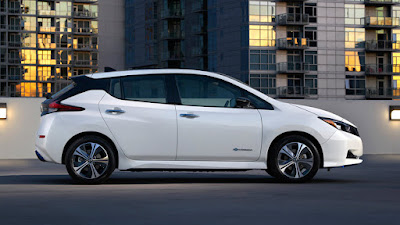This list consists exclusively of electric and hybrid vehicles. These cars eschew standard gasoline engines for much more technologically advanced and fuel-efficient means of propulsion. You still need to top them off in some form or another, though.
Hybrid vehicles use both a gasoline engine and an electric motor instead of relying on gas alone. The electric motor works in tandem with the engine, assisting with most maneuvers to use much less gas. Conversely, the gas engine helps keep the battery charged through regenerative breaking, putting power back into the battery that drives the electric motor every time you coast to a stop.
Electric vehicles drop the gasoline engine entirely and rely only on electricity to run. The trade-off is that fueling takes much longer and can be more difficult to find, and the range for these vehicles is limited. You need to plug electric vehicles in to charge them, and if you set up a quick charger at your home you can easily top off in about half an hour. If a dedicated charger isn't handy, though, charging through a power cable plugged into a more conventional 110/120-volt outlet can take four to eight hours.
Plug-in hybrids are, well, hybrid hybrids. They're hybrid vehicles that charge like electric cars and can run entirely off of the electric motor and battery for a distance. If you need to drive farther than the battery allows, a gasoline engine lets you keep going without plugging it in. They offer the environmental friendliness of an electric vehicle while providing options for when you can't find a charging station and don't want to wait hours to drive.
Hydrogen fuel-cell vehicles (like the Toyota Mirai) are still in their fledgling stages, even compared with hybrids and electric vehicles. They use hydrogen instead of gasoline to drive their motors, which makes them emission-free and environmentally friendly. They also have a much farther range than electric vehicles. The problem is that they're currently California-only vehicles, because that's the only state where you'll find hydrogen fuel stations with any remote regularity.
These vehicles are all much more green and economical in the long term than cars that rely only on gasoline engines. However, they're consistently more expensive than conventional vehicles (at least initially; the savings in fuel can help make up for that with a few years of driving), and they generally offer less cargo space. The trunks of most hybrid and electric vehicles are at least partially occupied by the bulky battery needed to drive the electric motor, so there simply isn't as much room in the back for your groceries or suitcases.
Car Connectivity and Apps
Connectivity is what lets you access navigation, real-time traffic updates, local search, and more while on the road. That's why automakers are aggressively adding connectivity and in-dash apps to vehicles in three varieties: embedded, tethered, and a hybrid approach.
Embedded connectivity means there's a modem in the vehicle (and a subscription is usually required) to connect to the cloud. Tethered systems leverage the connectivity—and data plan—of your portable device by syncing to the car's infotainment system. The hybrid approach uses a combination of the two: embedded connectivity for critical functions such as automatic crash notification, and tethered connectivity for, say, infotainment apps.
Does Your Car Need Bluetooth?
Blueooth was originally just for hands-free phone usage, but has evolved into providing streaming music from a portable device. It also serves as the link between a car's infotainment system and designated apps on your smartphone. Compatibility issues that have plagued the connection between phones and cars can still be a problem, however. That's why it's important to make sure your devices and new car can communicate with one another.
In fact, when you're test-driving new vehicles, make sure to spend time trying out the tech features. Get to know the operation of the infotainment system, understand how the car connects to the cloud and which apps are available, listen to the audio system and check out its music sources, enter a destination into the navigation system, and pair your device with the car via Bluetooth and make a few phone calls. This way you lessen your chance of buying a car with poor technology that you'll be stuck with for years to come.
The Best Navigation System
Knowing how to get where you're going is vital when driving, which is why in-dash navigation systems have made paper maps almost obsolete. And nav systems have gotten better with cloud connectivity, allowing for real-time traffic info, local search, and compatibility with portable devices.
However, these days we all have an advanced GPS system in our pocket in the form of a smartphone, and that's where tethered connections are helpful. Apple CarPlay and Android Auto let you use your phone's map system of choice on the dashboard screen, which is often more accurate and up to date than some navigation systems.
What Safety Features Do You Need In Your Car?
Last but not least is actually one of the first things you should consider when buying a new vehicle, and that's safety. Modern driver-assist systems use various combinations of cameras and sensors to keep track of dangers you may not notice, like the car ahead of you suddenly hitting the breaks, or another car approaching in your blind spot. Dash cams are useful in case you do get in a fender bender, as they continuously record what happens and can be used to limit your liability.
Depending on the driver assists in your vehicle, you might receive an alert warning you of potential hazards, while some systems will automatically take over for you. And that's worth a heck of a lot more than a new sound system.





0 Comments